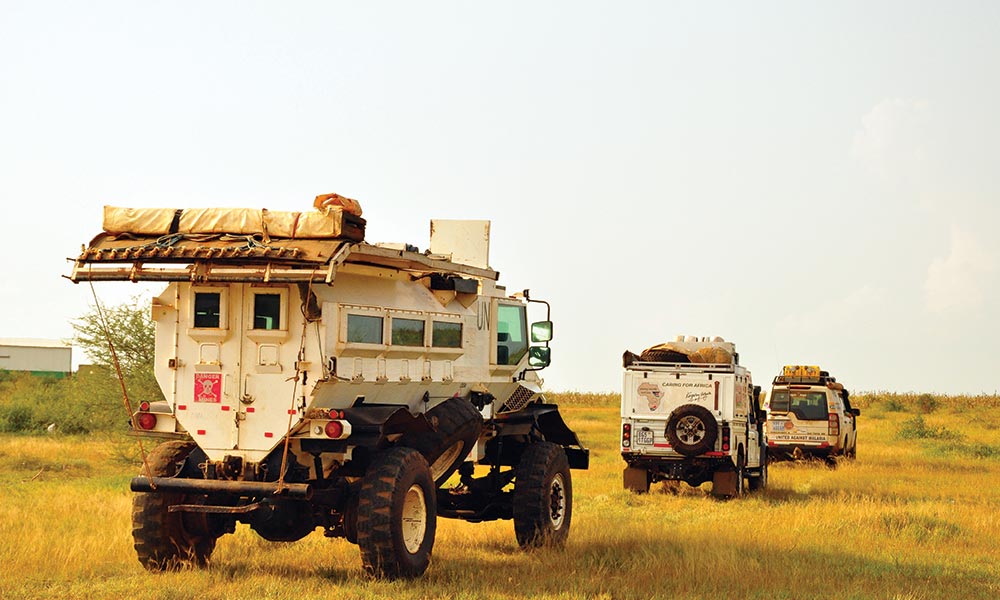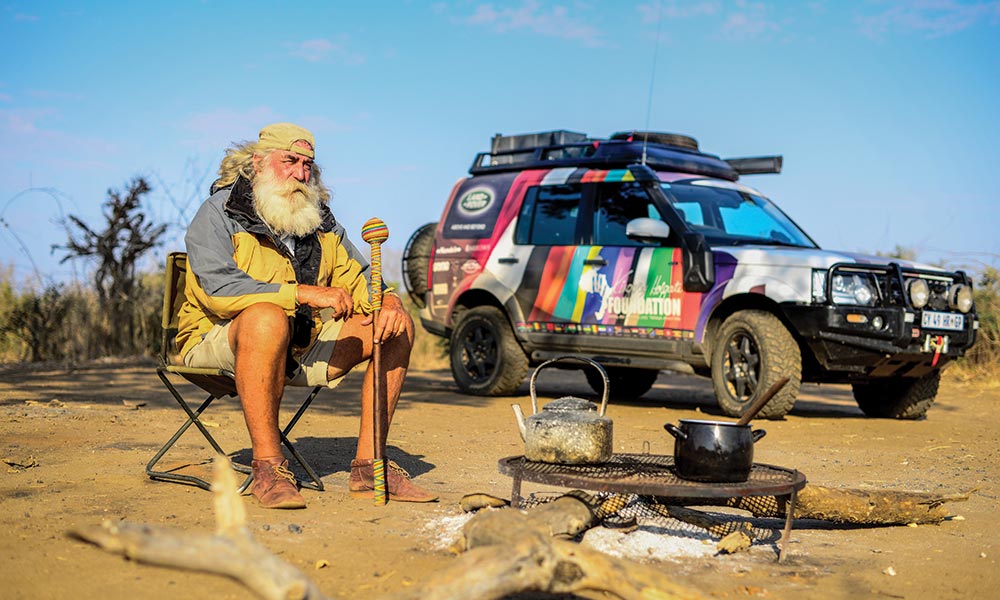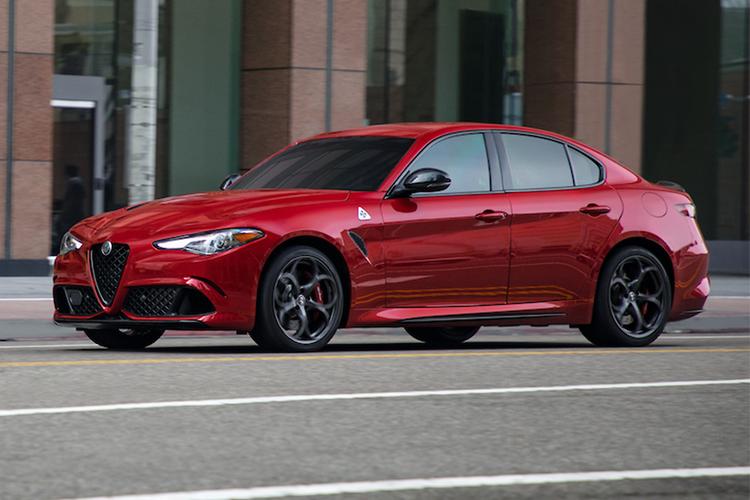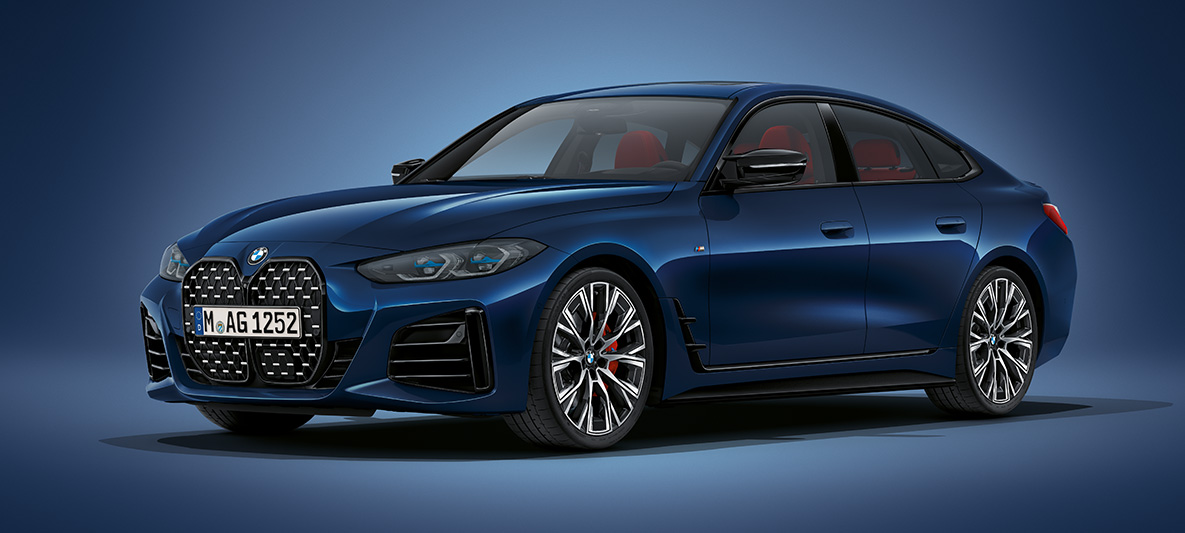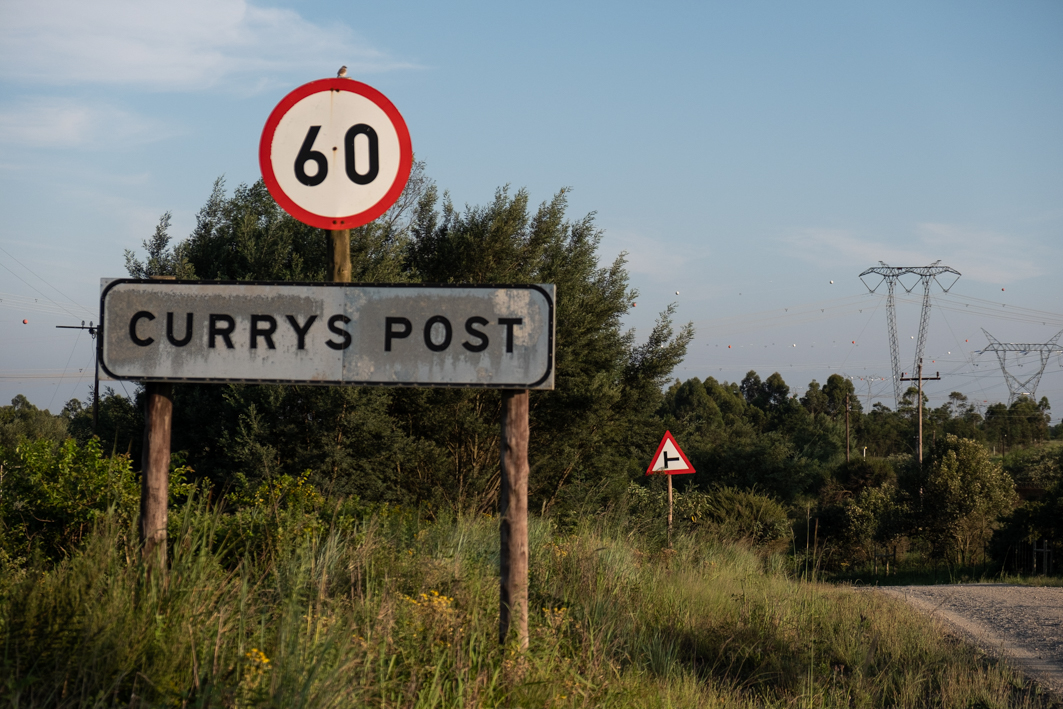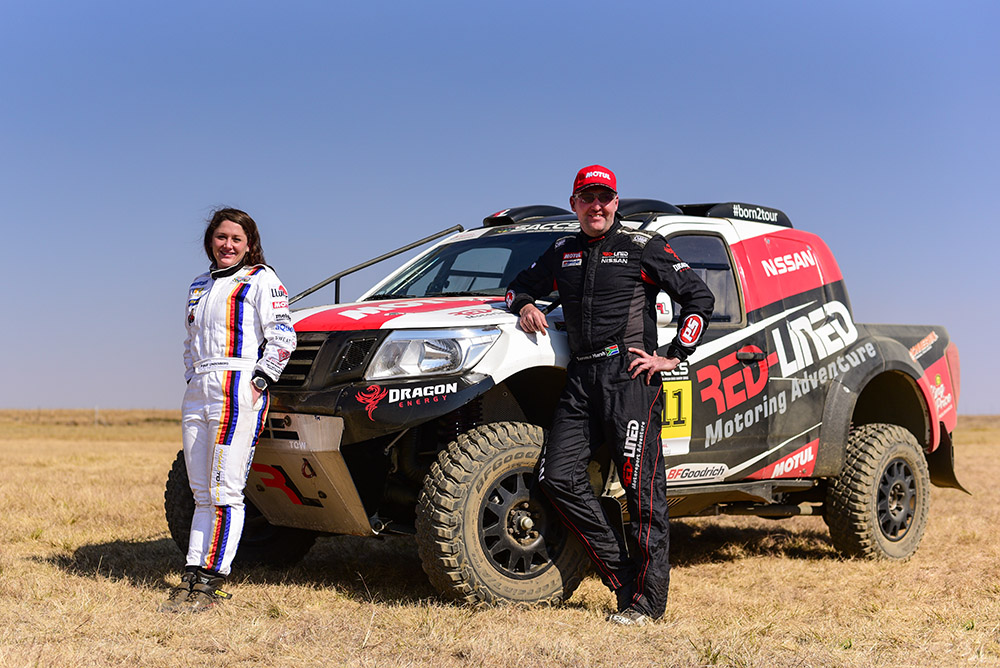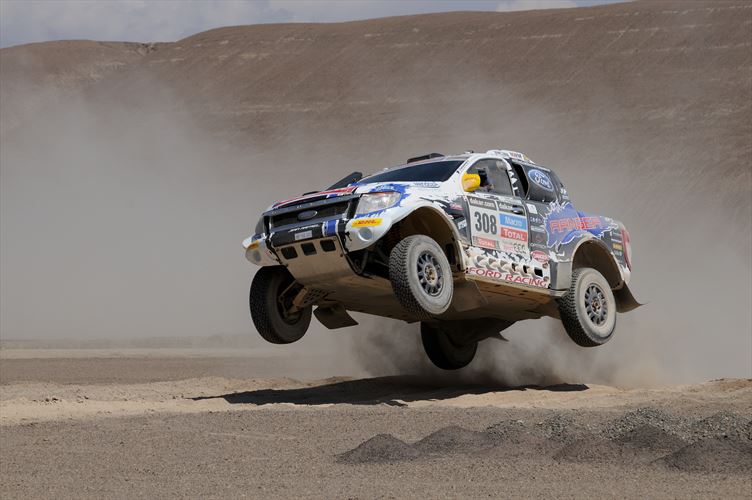In this new series, South Africa’s legendary explorer and philanthropist Kingsley Holgate writes about some of the stories behind the stories on his many adventures across the African continent. The Land Rover man kicks it off with a visit to Juba in South Sudan, in 2011.
throw another piece of twisted hardwood onto the fire. The sparks disappear into the starlit sky. In the distance, there’s the cry of a black-backed jackal and the hysterical cackle of a hyena. A goat potjie bubbles in the old three-legged cast-iron pot, next to the soot-blackened camp kettle. The roar of a Simba has everyone instinctively moving their old camp chairs closer to the fire. The tents form a circle around us and you can pick out the shapes of the overloaded Landies in the firelight. No cellphone signal here and, as the steam rises from enamel mugs of Renoster koffie, it’s time to share stories of adventure. “See what’s happening to South Sudan?” says Ross Holgate, using his cap to lift the hot kettle off the fire. He’s referring to the recent upsurge in hostilities between warring factions threatening the fragile state of Africa’s newest nation. We get to talking about how there had been so much hope a few years ago when, after 30 years of war – a struggle that cost more than two million lives – South Sudan was about to gain its independence on 9 July 2011.
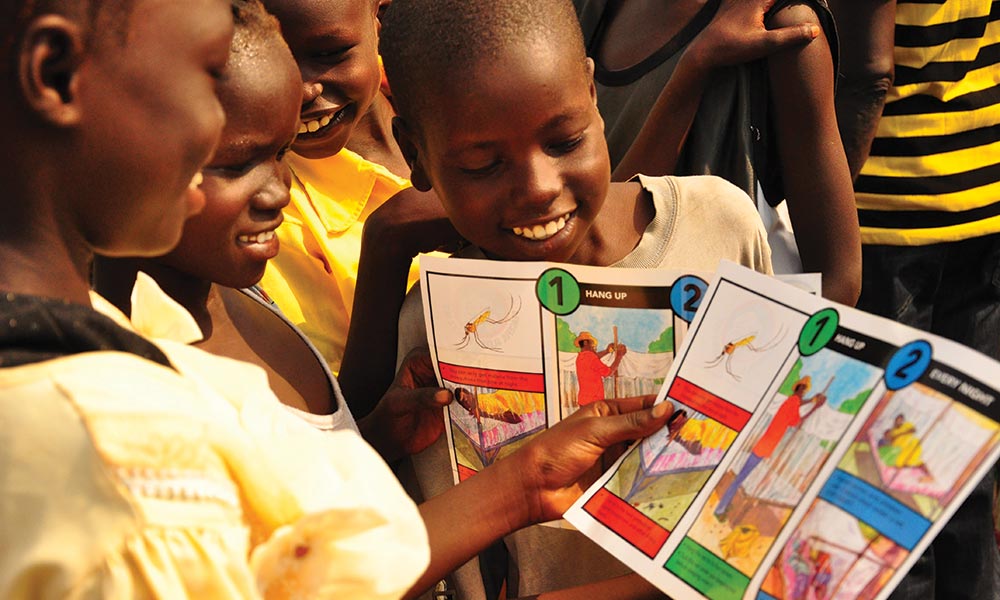
We wanted to be part of it and the challenge was to get down the Nile in time. And so we reminisce about a crazy expedition grandly called ‘Journey to Juba’ using Land Rovers and a big inflatable boat nicknamed Lady Baker, an adventure that started at old friends Jon and Trish Dahl’s Nile River Explorers’ base camp at Bujagali Falls in Uganda. It wasn’t far from where the explorer John Hanning Speke discovered the source of the Nile, where it tumbles from Africa’s largest lake, Lake Victoria. In the firelight, we talk about how we’d dropped down into Africa’s Great Rift Valley to camp near the base of Murchison Falls, where the Nile forces its way through a seven-metre gap in the rocks and tumbles 40 metres to continue its course through one of the most wonderful wildlife areas in Africa, with shoebill storks, elephant, hippo, giant crocs, and once home to the northern white rhino, sadly no more.
Travelling with the Nile current all the way to Lake Albert during the days, we’d sat around a fire just like this one at night, remembering 1993 when the war in South Sudan had been so bad that we couldn’t cross it as part of our ‘Cape to Cairo’ journey. We’d been forced to go around via northern Kenya and Ethiopia, to rejoin the Nile at Omdurman and Khartoum. What made this Journey to Juba so special was that we were finally filling in the missing piece. Michael Okoma, a young, tough-looking, wildlife ranger from Nimule National Park, complete with camouflage gear, boots, beret and AK47, rode with us for our protection through the Uganda/South Sudan border. The Nile is wide and beautiful in South Sudan; they call it the Bahr al Jabl (River of the Mountain) but shallow rapids play havoc. We rowed through some of them to prevent further damage to the Yamaha outboard motor, already suffering from dinged props and a chunk out of the cavitation plate.
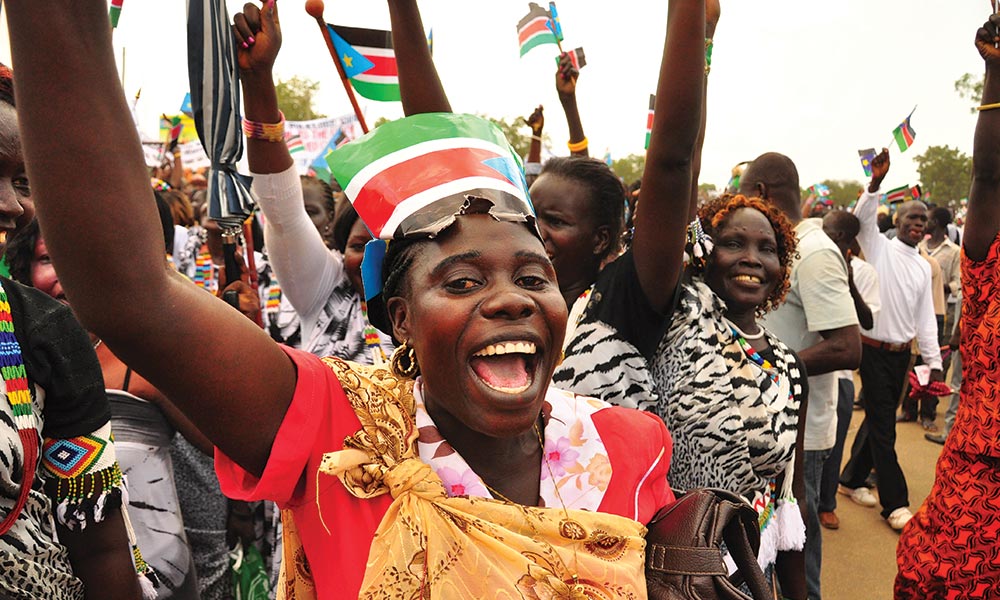
But then our worst nightmare: that horrible clunking, grating sound as the gearbox collided with an underwater rock and oil oozed from a couple of fractures. Now, not only was it a race against time to get to our Land Rover rendezvous point before the gearbox ran dry and seized, but if we didn’t make it, we’d have to row in the dark. Ross is a fundi when it comes to reading the river – he’s had years of experience – so we held on for dear life as he gunned it through the foaming rapids. “I remember how lucky we were to find you at that beautiful clearing on the banks of the Nile, patching the gearbox holes with Pratley’s putty, the kettle already on the fire,” interjects William Gwebo, who’d been part of the Land Rover back-up team. “But then came the Fula Rapids,” says Ross. “We discovered that white water expert Peter Meredith was absolutely right: try to run them in your boat and you’ll die, too dangerous and completely unnavigable.” We swapped fireside yarns about how challenging that stretch had been: humidity as thick as Sunday roast beef gravy and the rapids as turbulent as South Sudan’s difficult past, Bruce catching a giant whiskered Vundu for supper and how next morning, on top of a Landy, we’d portaged Lady Baker around the roaring rapids.
In the Landies, through Juba, people sweeping streets and burning litter – the dawn of a new nation – their hard-won independence had finally arrived. Security was tight, all major roads in and out of the city were closed. We’d made it just in time. “Do you remember that big, very tall Dinka shouting, ‘Brothers! You’re all the way from south in these cars. You drove here to support us?’ and then picking Kingsley up, throwing him over his shoulder and dancing a jig?” laughs Bruce. “Geez, those guys are massive!” That night, the independence celebrations began: but we’d camped too close to a bar and the music rocked till sunrise and with gunshots in the night, we hadn’t slept a wink. Next morning, we joined the jubilant thousands; the atmosphere was electric, security tense, as young South Sudanese led the singing of the new national anthem. Groups of banner-waving, drum-beating traditional dancers representing some of the 200 ethnic groups chanted and leapt in wild excitement as the flag of Sudan was lowered and the new flag of South Sudan raised.
Al Bashir, the hated president of the Khartoum government in the north was out and HE Salva Kiir Mayardit took the oath of office as the first president of the Republic of South Sudan. The crowd surged forward in the oppressive heat roaring, “South Sudan – a free South Sudan – Independence. Oh yeah!” It was a good feeling to be part of the birth of the world’s newest nation that day in 2011. Three days later, SPLA soldiers were amazed to see our group of crazies emptying a Zulu calabash of water into the Nile. We explained that it was an act of symbolism for their independence: we’d carried this water all the way from South Africa’s Cradle of Humankind. And so to the rumble of the Cooper Tyres, the expedition Landies crossed the old metal bridge over the Nile and swung south towards Uganda. And home.
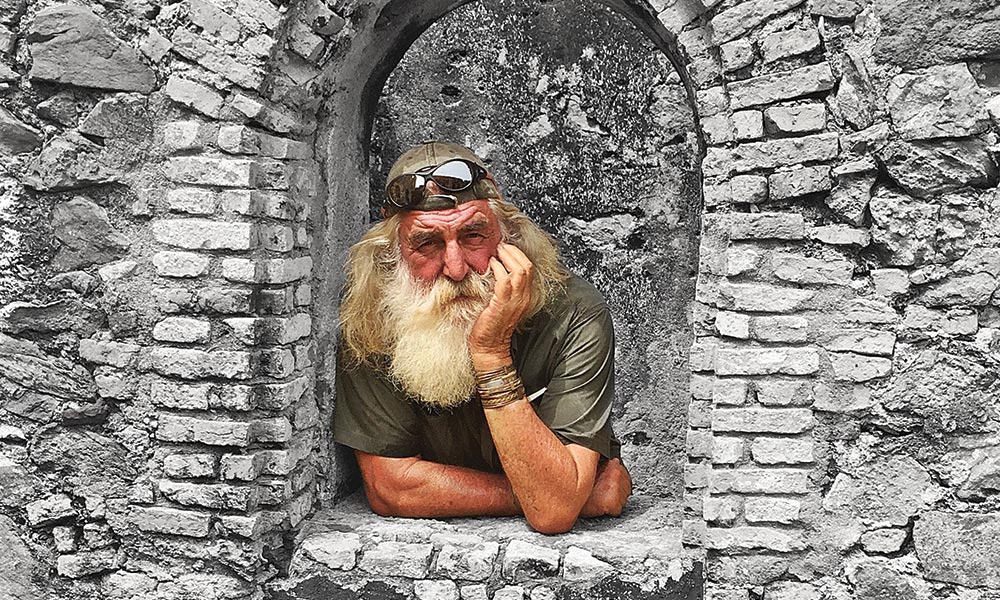
Kingsley Holgate is South Africa’s most famous adventurer, and he’s also a renowned humanitarian and author. The 71-year-old founded the Kingsley Holgate Foundation, which aims to “save and improve lives through adventure”. He has handed out thousands of mosquito nets to help save people from malaria, and, more recently, he’s provided people who are sight-impaired with glasses. Although he has driven other brands over the years, he now won’t drive anything but a Land Rover. Mind you, the Discovery 4 TDV6 is rather comfy.
